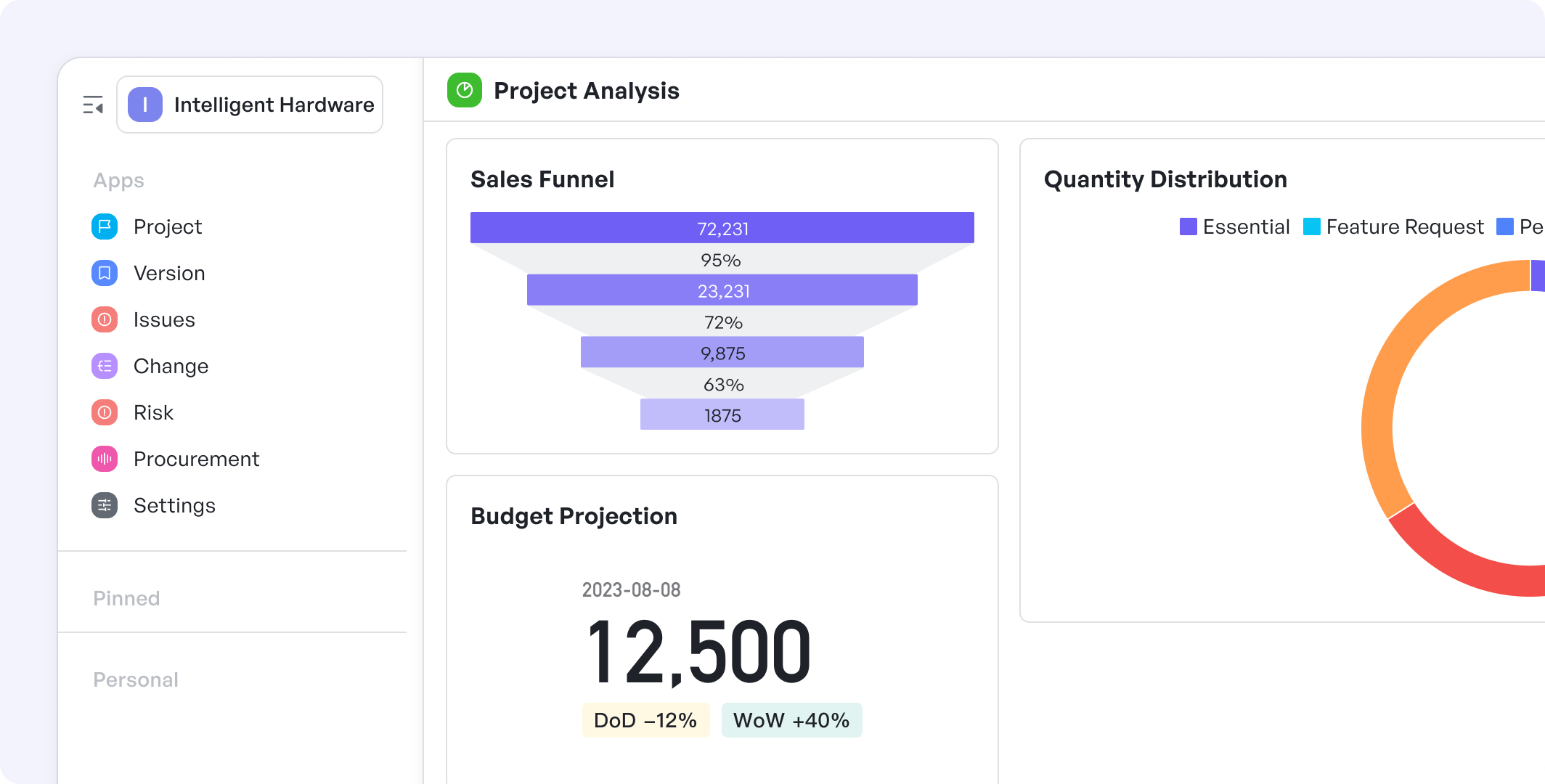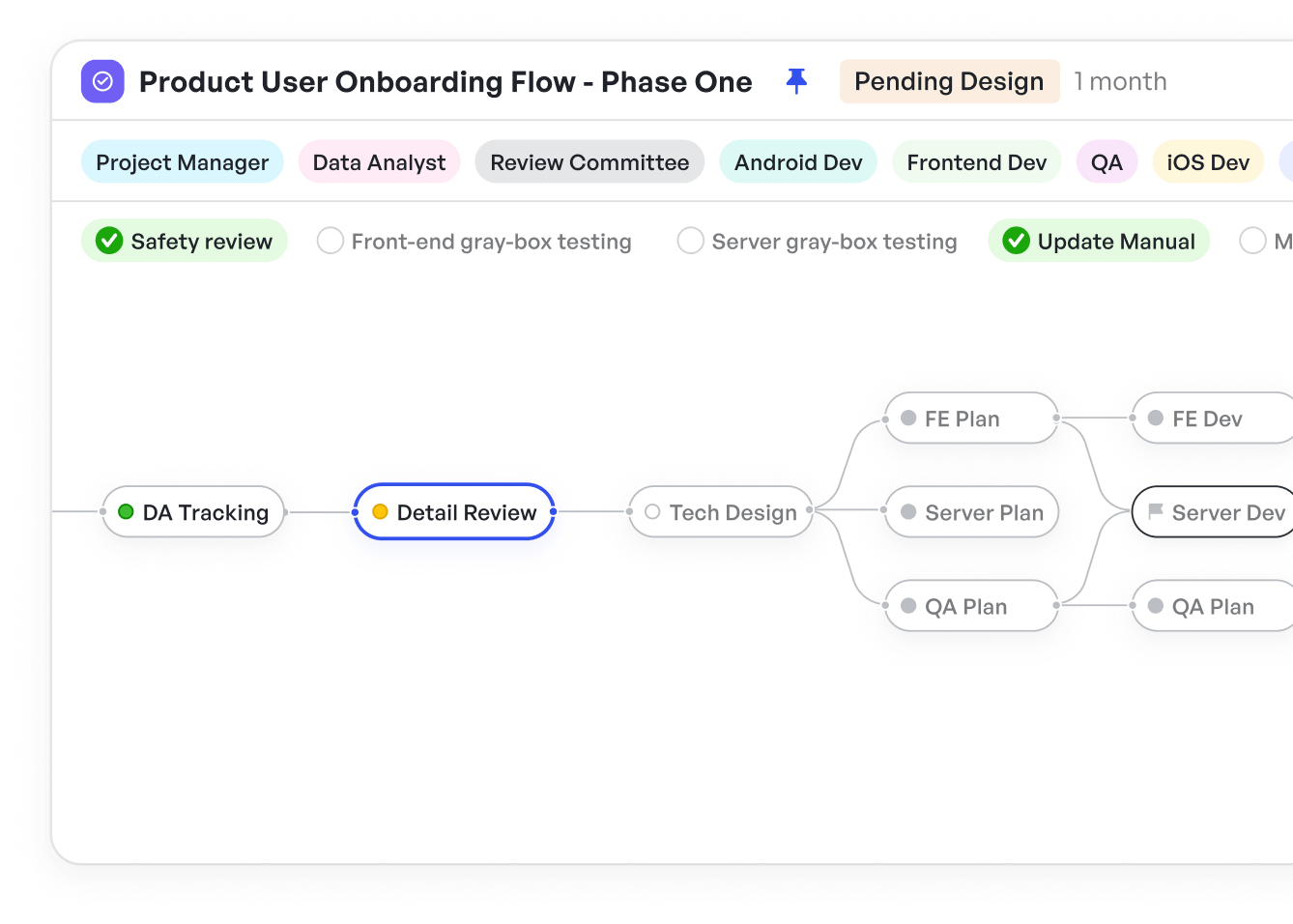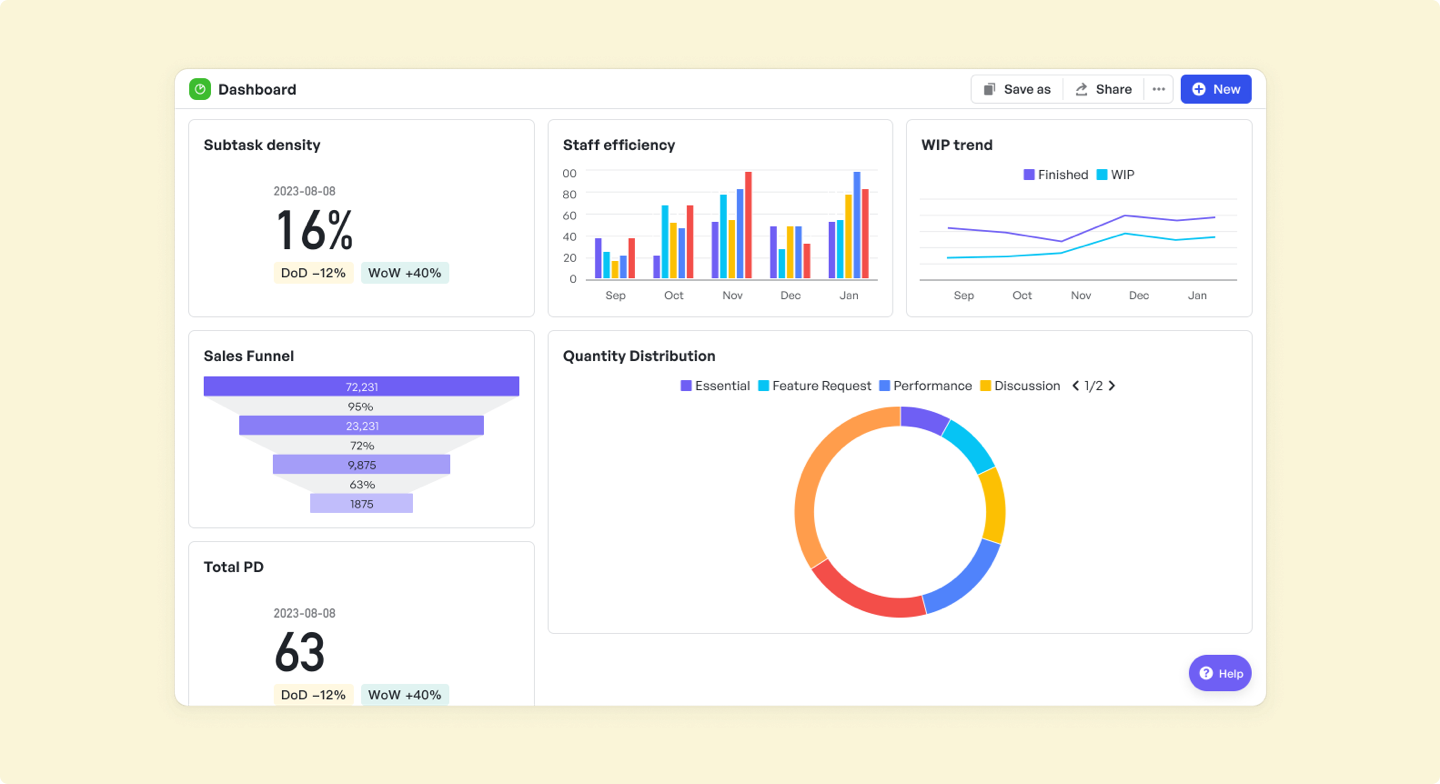How to Implement Scrum in Manufacturing

Manufacturers have long relied on Lean principles to improve efficiency, but today's market demands even more flexibility and agility. Scrum, traditionally used in software development, provides a dynamic way for manufacturing teams to quickly adapt, collaborate, and enhance productivity. Yet, integrating Scrum successfully can be challenging without the right tools.
Enter Meegle, a process-focused project management tool for manufacturing companies designed for visual clarity and efficiency.
 Manufacturing project plan template in Meegle
Manufacturing project plan template in MeegleIn this article, we’ll explore how to effectively implement Scrum in manufacturing environments, overcome common hurdles, and see why a tool like Meegle makes the transition easier and more impactful for your team.
The Evolution of Lean Principles in Manufacturing
Lean manufacturing has transformed production by eliminating waste, enhancing quality, and streamlining processes. Originating from Toyota’s production systems, lean methodologies have become a global standard in manufacturing. However, modern manufacturers increasingly seek additional frameworks to stay competitive.
Origins of Lean Manufacturing
Lean began as the Toyota Production System in post-World War II Japan, emphasizing continuous improvement (Kaizen), waste reduction, and value maximization. It revolutionized manufacturing globally, proving efficiency and waste reduction are key competitive advantages.
The Synergy Between Lean and Scrum
Lean focuses on continuous improvement and waste reduction, while Scrum emphasizes agility, adaptability, and quick feedback. Combining Lean's structured optimization with Scrum’s flexibility provides manufacturers with powerful tools to adapt rapidly to market changes, reduce inefficiencies, and continuously enhance productivity.
Understanding the Scrum Framework
Scrum is a popular Agile framework initially developed for software development but highly adaptable to manufacturing processes. Scrum helps manufacturers quickly adapt to changing market demands through short cycles called sprints, regular feedback loops, and continuous improvements.
Scrum Roles in Manufacturing
- Scrum Master: Facilitates and maintains Scrum processes, resolves team impediments.
- Product Owner: Defines the vision, prioritizes tasks based on business value.
- Development Team: Cross-functional teams working collaboratively to achieve sprint goals.
Manufacturing teams often map these roles onto roles such as shift supervisors (Scrum Masters), plant managers (Product Owners), and production teams (Development Teams).
Scrum Artifacts and Their Roles
- Product Backlog: Prioritized list of tasks or improvements.
- Sprint Backlog: Selected tasks teams commit to during sprints.
- Increment: Completed work delivering tangible value after each sprint.
Implementing Scrum in Manufacturing Environments
Visual Management and Problem Identification
Clear visualization is key to success. Tools like Meegle significantly enhance visual management through detailed workflows and dynamic dashboards. Meegle’s node-driven workflows help manufacturing teams visualize every step, clearly defining task ownership, statuses, and dependencies, reducing communication bottlenecks.
Tools and Techniques for Visual Management
 Node-driven workflows in Meegle
Node-driven workflows in MeegleMeegle’s Node-driven workflows allow easy visualization of complex manufacturing processes, showing real-time progress, upstream and downstream dependencies, and clear task assignments. The intuitive, drag-and-drop interface makes it simple to customize workflows for specific manufacturing scenarios.
Identifying and Addressing Problems with Agile Methodologies
Scrum’s frequent retrospectives encourage teams to continuously evaluate their processes. With Meegle, teams can quickly visualize bottlenecks, spot inefficiencies, and collaboratively address issues within each sprint, ensuring problems don't go unnoticed.
Steps to Successful Scrum Implementation in Manufacturing
- Assessment and Preparation: Evaluate current processes and prepare teams for change.
- Training Teams: Educate employees on Scrum methodologies, roles, and benefits.
- Setting Up Visual Workflows: Implement Scrum tools like Meegle to visually map production stages clearly.
- Continuous Iteration: Hold regular Scrum ceremonies—daily stand-ups, sprint planning, reviews, and retrospectives—to adapt and improve rapidly.
Economic and Quality Benefits of Scrum in Manufacturing
Quality Improvements in Production
Scrum enhances quality by promoting transparency and immediate issue identification. Meegle’s detailed task and issue tracking, combined with node-driven workflows, ensures quality checks are embedded directly into production processes, significantly reducing defects.
Economic Impacts of Scrum Implementation
Scrum increases efficiency and reduces waste, directly impacting profitability. Companies adopting Scrum typically see enhanced productivity, reduced cycle times, and lower costs.
Challenges of Implementing Scrum in Manufacturing
Common Obstacles and Solutions
- Resistance to Change: Employees accustomed to traditional methods may resist adopting Scrum. Solution: Provide comprehensive training and demonstrate clear benefits.
- Complex Workflows: Manufacturing often involves complex processes. Tools like Meegle simplify complexity by visualizing tasks clearly, facilitating smooth transitions between stages.
Best Practices for Leadership Support and Objectives
Leadership buy-in is critical. Leaders should clearly communicate the benefits of Scrum, support training initiatives, and consistently reinforce Scrum practices through their actions.
Importance of Executive Buy-in
Executive sponsorship significantly impacts Scrum’s successful adoption. Leaders who demonstrate commitment, allocate necessary resources, and actively participate in Scrum events help teams embrace the change positively.
Quality Improvements in Production
Scrum promotes quality through continuous inspections and quick corrections. With Meegle’s node-driven workflows, teams can instantly pinpoint quality issues, track resolutions, and maintain consistent standards throughout the production process.
Suggested Read:👉Project Proposal Guide: Steps for Easy Stakeholder Buy-In
Tools and Techniques for Visual Management
 Views in Meegle
Views in MeegleMeegle provides multiple visual layouts including Kanban boards, Tree views, and Panorama views, enabling comprehensive visualization. These tools empower manufacturing teams to gain quick insights, manage dependencies effectively, and identify bottlenecks early.
Suggested Read:👉7 Best Visual Project Management Software for 2025
Best Practices for Leadership Support and Objectives
To maximize Scrum’s impact, leaders must:
- Clearly define goals aligned with business outcomes.
- Regularly attend Scrum meetings, emphasizing their importance.
- Provide consistent, constructive feedback to maintain team momentum.
Quality Improvements in Production
Scrum ensures continuous quality improvements through regular inspections, incremental development, and immediate feedback loops. Meegle enhances this with visualized workflow stages, clearly defined responsibilities, and integrated feedback channels.
Economic Impacts of Scrum Implementation
Manufacturers implementing Scrum typically report:
- Increased productivity.
- Reduction in defects and rework.
- Enhanced employee engagement.
- Significant cost savings.
 Metrics analysis and reporting in Meegle
Metrics analysis and reporting in MeegleWith Meegle’s built-in analytics, teams can track these improvements clearly, justifying ongoing Scrum investments.
Tools and Techniques for Visual Management
Implementing tools like Meegle can greatly enhance visual management. Its powerful dashboards and customizable charts help teams quickly measure productivity, monitor task progress, and address challenges immediately, ensuring continuous improvement.
Why Meegle Enhances Scrum in Manufacturing
Manufacturers aiming for operational excellence should leverage Scrum principles combined with powerful tools like Meegle.
By offering superior visual workflow management, customization, intuitive dashboards, and seamless team collaboration, Meegle positions itself uniquely as an effective solution for manufacturers adopting Scrum, outperforming traditional tools like Jira, Monday.com, and ClickUp.
Build your workflow today!
The world’s #1 visualized project management tool
Powered by the next gen visual workflow engineRead More
Check All BlogsStart creating impactful work today



